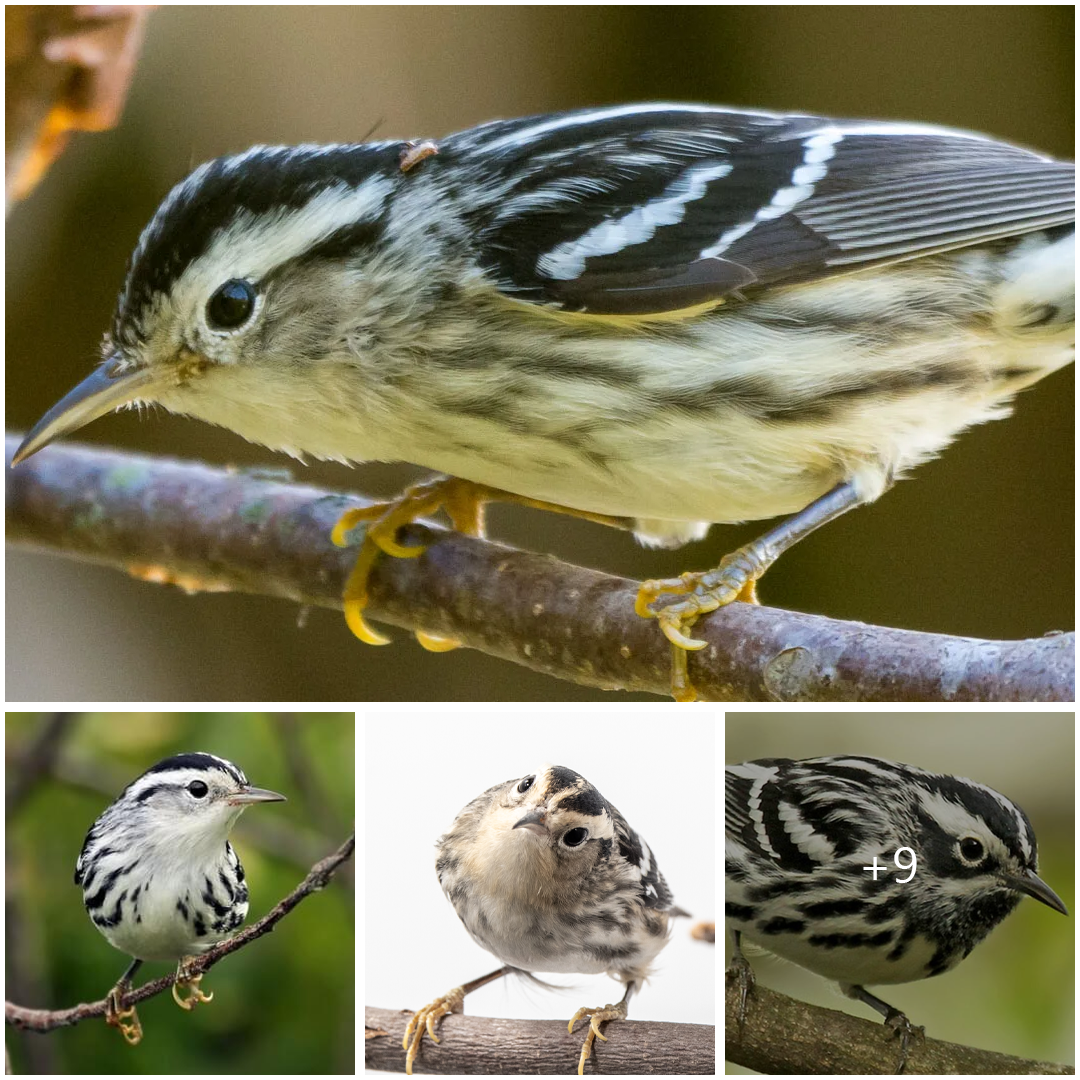
The Enigmatic Charm of the Black-and-White Warbler: A Forest Jewel
The black-and-white warbler (Mniotilta varia) is a captivating avian species that graces the woodlands of North America with its distinctive presence. With its striking plumage and unique foraging behavior, this charismatic bird holds a special place in the hearts of birdwatchers and nature enthusiasts alike.
Appearance and Identification: Dressed in bold monochrome attire, the black-and-white warbler stands out amidst the verdant foliage of its forest habitat. Its upperparts are adorned with bold black stripes on a white background, resembling the intricate brushstrokes of a painter’s canvas. The underparts feature a stark contrast of white and black streaks, adding to the bird’s striking appearance. Its slender, slightly downcurved bill and agile demeanor make it a master of maneuverability among the branches.
Habitat and Distribution: The black-and-white warbler is primarily found in mature deciduous and mixed forests throughout its range, from the boreal forests of Canada to the hardwood forests of the eastern United States. During the breeding season, it favors habitats with dense understory vegetation, where it can forage for insects and spiders among the foliage. In the winter months, it migrates to Central America and the Caribbean, seeking refuge in similar forested habitats.
Foraging Behavior: Renowned for its energetic and acrobatic foraging style, the black-and-white warbler is a delight to observe as it navigates the intricacies of the forest canopy. Unlike many warbler species that flit and flutter among the branches, this bird exhibits a unique creeping behavior reminiscent of a nuthatch or creeper. It hops along tree trunks and branches, probing for insects and spiders hidden in the bark with its slender bill. This distinctive foraging style sets it apart from its avian counterparts and adds to its allure as a forest jewel.
Breeding and Vocalizations: During the breeding season, male black-and-white warblers establish territories and serenade potential mates with their melodious songs. Their songs are characterized by high-pitched trills and musical notes that echo through the forest canopy. Females build cup-shaped nests on the forest floor or in low shrubs, where they lay their eggs and raise their young. Both parents participate in caring for the chicks, ensuring their survival until they fledge and become independent.
Conservation Status and Threats: While the black-and-white warbler is currently listed as a species of least concern by the International Union for Conservation of Nature (IUCN), it faces threats from habitat loss and fragmentation. Deforestation, urban development, and climate change pose significant challenges to the bird’s long-term survival. Conservation efforts focused on preserving and restoring mature forest habitats are essential for safeguarding this enchanting species and ensuring its continued presence in North America’s woodlands.
In conclusion, the black-and-white warbler captivates observers with its bold plumage, unique foraging behavior, and enchanting melodies. As a denizen of North America’s forests, this charismatic bird serves as a symbol of the beauty and diversity of our natural world, reminding us of the importance of conservation efforts to protect our avian treasures for generations to come.





